Features
A REBIRTH OF HOPE IN COLOMBIA
The Return of the Patriotic Union Party
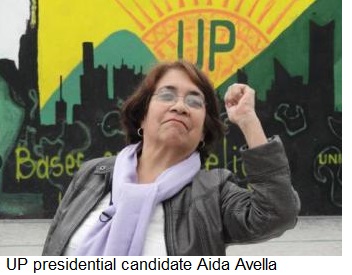
by James Bargent, Toward Freedom
MEDELLIN — In Colombia's congressional elections in early March, the name the Patriotic Union appeared on ballot sheets for the first time in over a decade. It is a name that carries a heavy historical burden, evoking memories of a political party whose tragic history casts a long shadow over Colombia's civil conflict—and whose remarkable rebirth now hangs in the balance.
The first incarnation of the Patriotic Union (Unión Patriótica or UP) was extinguished when the state removed its legal status as a political party in 2003 after membership was whittled down to a handful of activists, and the party could barley muster 50,000 votes in elections.
The signing of the UP's death warrant was little more than legally ratifying the success of a bloody "political genocide." By that time, thousands of UP leaders, activists and supporters had been murdered by right-wing paramilitaries, corrupt members of the security forces and drug traffickers, who saw the party as the civilian face of the guerrillas of the Revolutionary Armed Forces of Colombia (FARC).
BRAZILIAN HYDRO BEHIND BOLIVIAN FLOODING?
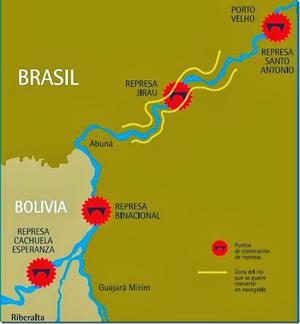
by Emily Achtenberg, NACLA
In recent months, Bolivia's Amazonian region has experienced the most disastrous flooding of the past 100 years. In the Beni department, seven of eight provinces and 16 of 19 municipalities are under water, with 75,000 people (more than one-quarter of the population) affected. Economic losses from the death of 250,000 livestock heads and destruction of seasonal crop lands, estimated at $180 million, are mounting daily.
While seasonal flooding is common in Beni, experts agree that climate change has added a threatening new dimension to the cyclical pattern, bringing record rainfall to most of Bolivia this year. Deforestation, exploitation of cultivable land, and loss of infrastructure through the breakup of traditional communities are other factors contributing to soil erosion and increased vulnerability to flooding.
In the past weeks, attention has focused on the role played by two recently-inaugurated Brazilian mega-dams—the Jirau and the San Antonio—in Bolivia's floods. Located on the Madeira River, the largest tributary of the Amazon which receives its waters from rivers in Bolivia and Peru, the dams are just 50 and 110 miles, respectively, from Brazil's Bolivian border.
CHINA AND THE GREAT GAME
Beijing's Strategic Interests in Post-Withdrawal Afghanistan
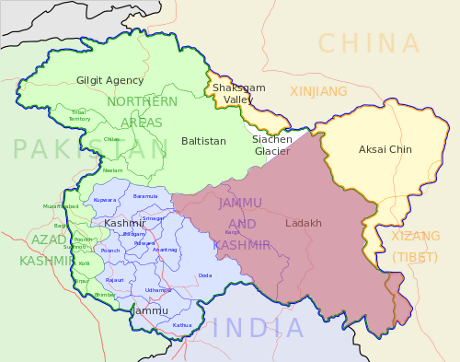
by Haifa Peerzada, openSecurity
The conflict in Afghanistan is becoming more complex by the day, spreading beyond its borders into south Asia. There are four main parties: the US, Pakistan, Afghanistan itself and the Afghan Taliban. Others, previously remotely involved, are increasingly drawn in—the most prominent being China.
China's growth rate of close to 10 percent per annum makes it a global economic hub with which to reckon, second only to the US. This may not however be socially sustainable as it perpetuates inequality in income, heavily concentrated in China's southern coastal area. Moreover, the country's ethnic cohesion is uncertain: apart from minority tensions, the Han majority is itself fractured among ethno-linguistic communities which have experienced sustained segregation.
Fear of becoming a target of non-state actors has put the authorities in Beijing on their guard. That fear was exacerbated by the recent violent attack in Tiananmen Square, allegedly by members of the Muslim Uighur community from Xingiang province in the north-west. While the Turkish Islamic Party claimed responsibility, the authorities blamed the East Turkestan Islamic Movement, a group affiliated with al-Qaeda. Such incidents exacerbate the socio-economic problems which may in the final analysis prove destructive for the instrumental legitimacy on which the power of the Communist Party rests.
The state has for long has been concerned about the separatist movement in Xingiang—a concern enhanced by a fear of Afghanistan providing safe havens for Uighur militants. China sought to counter this by maintaining good connections with the Afghan Taliban and the Quetta Shura. For their part the Taliban are not keen on isolating China as it is the only non-Muslim country that has promised to give them political recognition and respite from UN sanctions—in return for not allowing any group to conduct any violent activity on its territory. This understanding seems however to be falling apart, with China fearing that Afghanistan may be slipping into another civil war, thereby creating space for militants to launch attacks on it. That may be why China supported the US-Taliban talks in Doha, however unsuccessful they proved.
MALI: HOPES FOR RECONCILIATION
The View from Timbuktu
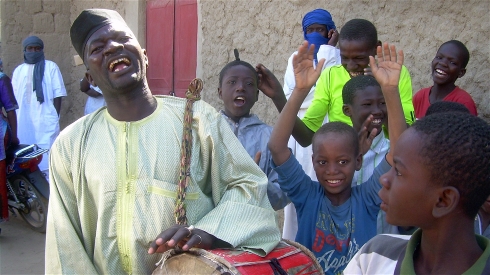
from IRIN
TIMBUKTU — Residents of Timbuktu, Mali's cultural capital, are hopeful the city can draw on its long history of tolerance to heal social relations frayed by a 10-month Islamist occupation, which Arab and Tuareg communities are still being accused of having abetted.
In his book on the recent Islamist occupation of Timbuktu, La Ville Sainte dans les ténèbres du Jihadisme (The Holy City in the Darkness of Jihadism), senior government official Houday Ag Mohamed, a Tuareg, explains that successive insurgencies over the years led to a wave of discrimination and hostility against Tuareg and Arabs living in Mali. It is "an ostracism you can see in the looks full of hate and recrimination they receive," he said.
A Timbuktu resident who gave his name only as Mohamed says he sometimes feels mistrust from other communities, and hints that the organization that nominally represents the Tuareg, the National Movement for the Liberation of [Azawad] (MNLA), has much to answer for. The MNLA captured parts of the north after the March 2012 coup in the capital, Bamako; they were subsequently overthrown by the Islamists. "Did they ask people if they wanted an insurgency? There was no consultation. They just left us to reap the harvest," Mohamed said.
The Islamists were beaten back by French forces, which intervened in January 2013 as the insurgents began to advance towards Bamako.
But Salem Ould el Hadj, 73, a retired teacher, warns against oversimplifying Timbuktu's complicated ethnic mosaic. "There is not some big racial divide here. We have never had apartheid here. People pray together, read together and travel together. Go around the markets and you will see white and back traders working side by side. Go back in history and you will find that it has been like that since the 14th century," he said.
THE CONSCIENCE OF SYRIA
An Interview with Activist and Intellectual Yassin al-Haj Saleh
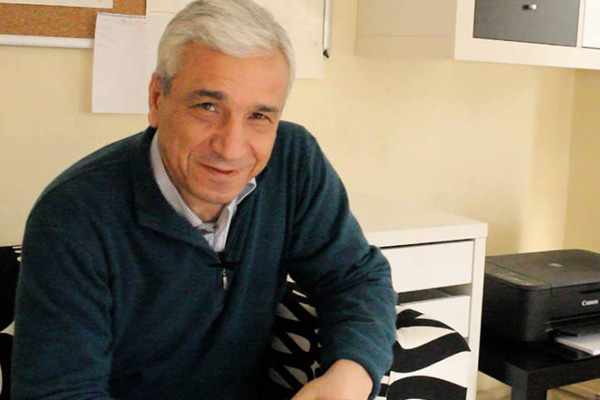
by Danny Postel and Nader Hashemi, Boston Review
Yassin al-Haj Saleh is often called the conscience of the Syrian revolution. Born in Raqqa in 1961, he was arrested in 1980, while a medical student in Aleppo, and imprisoned for his membership in a left-wing organization. He remained a political prisoner until 1996, spending the last of his sixteen years behind bars in the notorious desert-prison of Tadmur (Palmyra).
Saleh has emerged as one of the leading writers and intellectual figures of the Syrian uprising, which began three years ago this week. In 2012 he was given the Prince Claus Award (supported by the Dutch Ministry of Foreign Affairs) but was unable to collect it, as he was living in hiding in Damascus. Now living in exile in Turkey, Salehwrites for a variety of international Arabic-language publications. Along with a group of Syrians and Turks, he recently established a Syrian Cultural House in Istanbul called Hamish ("margin" or "fringe"). Saleh has published several Arabic-language books, most recently Deliverance or Destruction? Syria at a Crossroads (2014).
—Danny Postel and Nader Hashemi, co-editors of The Syria Dilemma.
SYRIA BETWEEN IRAQ AND A HARD PLACE
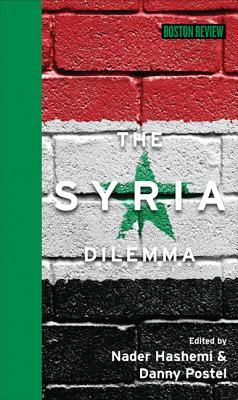
The Syria Dilemma
Nader Hashemi & Danny Postel, editors
Boston Review Books, MIT Press, 2013
by Bill Weinberg, Middle East Policy
An illustration of the very dilemma referenced in the title of The Syria Dilemma is that several contributors to this timely book cite 75,000 dead in the conflict; the figure is now above 100,000. The anthology, which saw print just as Obama threatened intervention in the wake of the August 2013 chemical attacks near Damascus, compiles editorials and policy recommendations produced in the preceding months. Co-editors Nader Hashemi and Danny Postel try to be objective, assembling both pro- and anti-intervention voices. With few exceptions, these exemplify the tunnel-vision that characterizes both sides, forestalling a painfully honest reckoning.
THE FAR RIGHT IN UKRAINE: A NEW ORDER?

by Cas Mudde, openDemocracy
The Euromaidan "revolution" will undoubtedly remain one of the key political events of 2014. Most domestic and foreign observers were completely taken by surprise by the events that followed President Viktor Yanukovych's decision not to sign an integration treaty with the European Union (EU) in November 2013. While the initial demonstrations in downtown Kiev were somewhat expected, few had ever thought that they could spiral so out of control that, just three months later, a democratically elected government with one of the most popular politicians in the country was forced out of power.
Euromaidan has also been interesting in terms of the propaganda battle that has been fought in the traditional and social media. As is now standard for "revolutions" in the twenty first century, activists were quick to set up several Facebook pages, Twitter accounts, and other websites to provide their own positive view of the ‘revolution,’ countering the negative reports from the official Ukrainian media and, particularly, the largely Kremlin-controlled Russian media. They were very successful in disseminating their message, in part through networks of sympathizers in the west (including Ukrainian émigré communities in North America and post-Soviet scholars across the globe).
One of the main struggles has been over the importance of "fascists" in the Euromaidan. Almost from the beginning the pro-Kremlin media emphasized the importance of "Ukrainian fascists" among the anti-government demonstrators, and within days the whole uprising was to be portrayed as "fascist." This was to be expected, as both Soviet and post-Soviet Russian elites have tended to equate Ukrainian nationalism with fascism, linking any and every anti-Soviet or anti-Russian movement to the infamous Organization of Ukrainian Nationalists (OUN) of Stepan Bandera, which (temporarily) collaborated with Nazi Germany in a misguided attempt to gain Ukrainian independence from Stalin's brutal Soviet regime.
At the same time, most domestic and foreign sympathizers of "Euromaidan" have minimalized the importance of the far right, arguing that Euromaidan was a genuine democratic and pro-European uprising in which far right elements were insignificant.
COINTELPRO AND DIVISIVE HATE

by Bill Weinberg, World War 4 Report
The very point of the FBI's COINTELPRO strategy of the 1960s was paranoia, divisive hatred, and ultimately cannibalization of radical opposition movements in the United States. And it was grimly successful. Now that there are signs that US police agencies are reviving such tactics, it is imperative that activists learn from the mistakes of their counterparts two generations ago, and find rational, principled, humane and above all tactically astute ways to respond.















Recent Updates
2 days 4 hours ago
3 days 7 hours ago
3 days 8 hours ago
3 days 21 hours ago
3 days 21 hours ago
4 days 17 min ago
4 days 40 min ago
4 days 44 min ago
6 days 23 hours ago
1 week 2 days ago